Mobile crane safety: This article focuses on hazards, including where they might be found in different workplaces. We also provide you with a range of further resources to make your risk assessment process as smooth as possible.
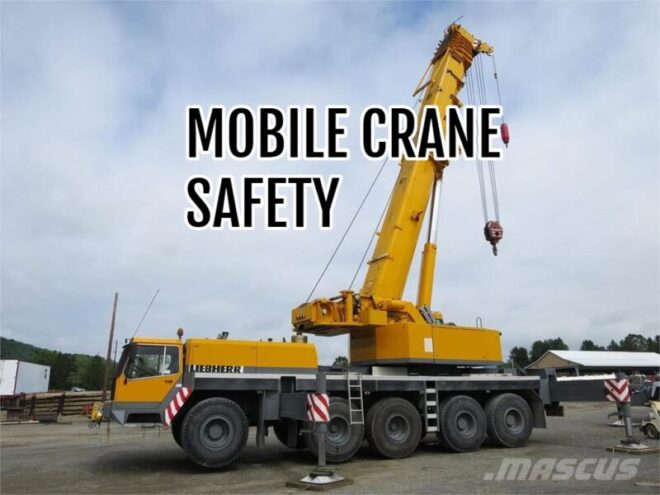
Crane Lifting hazards and control measures
Mobile crane safety checklist, Types of Hazards in the Workplace:
What Are the Most Common Hazards in the Workplace? The words ‘risk’ and ‘hazard’ are often used interchangeably. However, if you are responsible for managing health and safety in your workplace, it’s important that you understand the difference between them.
Mobile crane safety hazards
Mobile cranes are incredible pieces of heavy machinery but they have a limit to the amount of damage they take from mother nature. Cranes have a maximum design wind speed for safe operation; once the wind exceeds that limit the crane must be taken out of service. It is important to remember that wind speed increases with height.
Hoisting and lifting operations in windy conditions can cause load swinging and rotating that may not only pose a danger to the riggers but also cause the crane to overload and crash. It is important to assess the load size and shape to determine whether lifting it in windy conditions can pose any danger.
Mobile crane hazards and control
Operational potential hazards & risk controls – mobile crane hazards and control:
- Hazards – starting the engine
- Risk controls & general precautions
- A1. Carbon monoxide poisoning from the exhaust fumes when the engine is running indoors.
- If the engine must be started indoors, open all doors and windows to ensure good ventilation. If necessary connect an additional pipe to the exhaust pipe and expel the exhaust gases to the outside.
- A2. Fire from spills.
- Keep the engine and surroundings clean. Do not leave tools, rags, or anything else in the engine compartment. After inspection and maintenance wipe off any spilled oil or fuel. Check that flammable material is not scattered about or piled up near the engine.
- A3. Accidental movement of the crane.
- Only start the engine when seated in the operator’s seat.
- A4. Operating the crane when it is being serviced or repaired.
- Always attach warning tags on the control levers of the machine when it is being serviced or repaired. Isolate the machine where possible.
- A5. Collisions with people and objects
- Check for people and objects near the crane before you start the engine. Concentrate on the job and always be aware of people and equipment approaching the crane. Erect temporary barriers around the crane if necessary.
- A6. Unintended movement of the crane on startup.
- Before starting the engine check that all levers, pedals, and switches are in their neutral or OFF positions.
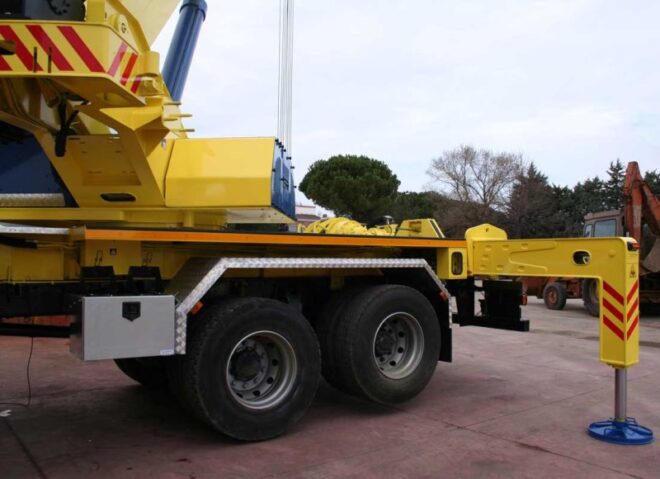
Mobile crane lifting hazards and control measures
- Hazards when operating the crane
- Risk controls & general precautions
- B1. Structural failure or tip-over of the crane during operation.
- Do not exceed the lifting capacity of the crane.
- If unsure of the lifting capacity, always check the rated lifting capacity chart. Lifting capacity varies with the boom length and working radius.
- Always check that all safety devices and warning systems are functioning properly.
- Do not operate a crane if any of the safety devices or warning systems are faulty.
- B2. Collision from swinging load or reduced stability of the crane.
- Avoid sudden movement or violent operation of the crane.
- Operate the levers and pedals smoothly. Start, accelerate, decelerate, articulate, and stop the crane smoothly and securely.
- When lifting long loads tie a guide rope to each end of the load. This will prevent the load from swinging whilst it is being lifted.
- Compound operations, such as combining winch hoisting or lowering, articulating, luffing, and telescoping will be slower than individual operations.
- When switching from compound to single operation, work the controls slowly and smoothly with no sudden change in speed or direction.
- B3. Crane damage and tip over from using counterweights that are not specified.
- Only use counterweights supplied by the manufacturer.
- Incorrect counterweights may subject the crane to unreasonable strain and damage it, or decrease the stability of the crane.
- For machines with variable counterweight, ensure the selection on the crane computer is correct before commencing lifting operations. Always refer to the correct load chart.
- Follow any warning provided in this manual or by the crane computer.
Mobile crane safety tips
- Hazards – starting the engine
- Risk controls & general precautions
- B4. Collision if the operator is not concentrating on the job.
- Do not operate the crane if you are tired or cannot concentrate on the job.
- Always be alert and watch that the boom or the suspended load does not collide with people or buildings and the load does not collide with the boom.
- B5. Operating the crane by reaching in through the door or window. (The operator is not in full control of the crane and could cause the crane to collide with people, buildings, and other objects).
- B5. Only operate the crane while seated in the operator’s seat.
- B6. Dropping off the load from an unattended crane.
- B6. Never leave a suspended load on an unattended crane.
- When leaving the crane, always lower the load to the ground, switch off the engine, lock the crane and take the keys with you.
Mobile crane load chart
- B7. Dropping of load, damage, or tip-over of the crane due to overloading or unstable load.
- Carry out the following checks before lifting a load:
- a. Check that the total weight of the load (including the weight of slings, hook, and attachments) is below the rated capacity of the crane.
- b. Check that the number of parts of the line on the winch rope is a standard number according to the rated lifting capacity.
- c. Check that the slings are properly positioned to lift the load above its center of gravity.
- d. Check that the winch rope is hanging vertically.
- Carry out the following checks before lifting a load:
- When the load just leaves the ground pause until it stops swinging. Confirm that the load is stable before continuing to hoist.
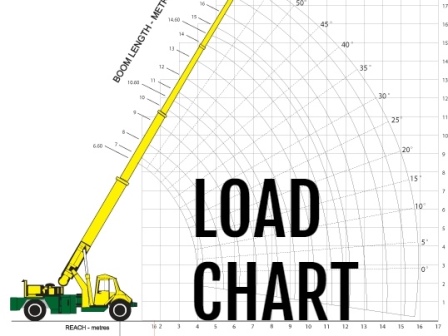
Crane lifting safety procedure
Safe work procedure for lifting operation using mobile crane:
- Hazards – reduced stability
- Risk controls & general precautions
- B8. Dropping off the load from insecure slings or hooks.
- To prevent the load from falling off or slipping out of the slings, pay attention to the following points when arranging the sling:
- The slings or chains should be of the right capacity and in good condition.
- Arrange the slings so that they do not get tangled with each other.
- The hook is fitted with a retainer to prevent the slings from slipping out. Check that the hook is in good condition and the retainer is operating correctly.
- Place a protector (some soft material) to prevent the rope from damage where it comes into contact with the corner of the load, and elsewhere where the sling is prone to damage.
- To prevent the load from falling off or slipping out of the slings, pay attention to the following points when arranging the sling:
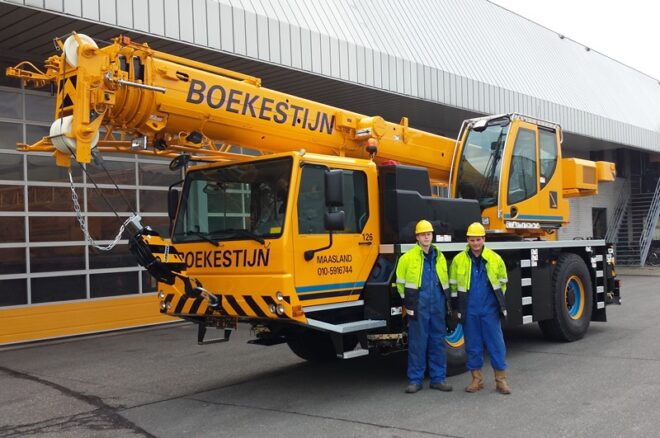
Crane safety devices
Mobile crane safety devices comprise load moment limiter, turntable lock pin, boom backstop, hoist limit switch, anemometer, level gauge, hydraulic overflow valve, counterbalance valve, two-way hydraulic lock, stewing warning lamp and travel warning lamp, etc.
- B9. Damage to the crane or reduced stability when working with a heavy load and long boom.
- When lifting a load the boom flexes and increases the working radius.
- This is more noticeable with a very heavy load or long boom.
- Allow an extra margin below the rated lifting capacity to compensate for the increased working radius.
- B10. Overload due to the increased flexure of the boom when the load is lifted suddenly.
- Lift the load off the ground carefully.
- Hoist the load vertically and pause briefly when the load is just off the ground to confirm the sling and that there is no overload.
- Then resume hoisting.
- B11 Damage to the crane or reduced stability if the load is lifted off the ground by luffing or extending the boom.
- Never lift the load off the ground by luffing or extending the boom.
- Wait until the load is just off the ground before luffing or extending the boom.
- B12 Damage or injury caused by personnel under the load when articulating.
- Before moving the load sideways check that it is safe to do so.
- The path of the load or crane should be clear of people or obstructions.
- B13 Collision or dropping of load on people.
- Do not move the suspended load above people’s heads.
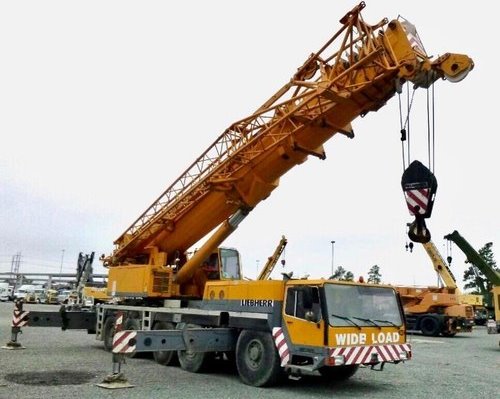
Mobile crane stability
- B14 Damage or injury caused by loss of stability due to operation on sloping ground
- Read and understand the Operators manual regarding the operation on sloping ground. The rated capacity of the machine should be reduced when lifting on or traversing sloping/uneven / out of level terrain.
- Do not operate the machine on the sloping ground outside the limits described in this manual and the machine load chart.
- Plan lifts carefully when operating on uneven terrain.
- Operators must be able to perform a manual calculation to reduce the safe working load of the machine if a lift plan is unavailable.
- Some Pick & Carry cranes may be fitted with crane computers that can perform a reduction in a rated capacity. Refer to the operator’s manual to check if this function is available on the machine in use
- Read and understand the Operators manual regarding the operation on sloping ground. The rated capacity of the machine should be reduced when lifting on or traversing sloping/uneven / out of level terrain.
- B15 Collision with obstacles from the entanglement of wire rope during hoisting or articulating.
- If the wire rope becomes entangled with an obstacle, carefully disentangle it without further hoisting or slewing. Place the load back on the ground and check that the wire rope is not damaged before resuming.
Crane overload protection
- B16 Overload and tip-over of the crane by sudden raising or lowering of the boom.
- Lower the load to the ground using the winch. Avoid sudden raising and lowering of the boom as it makes the crane prone to tipping over.
- B17 People falling from a height.
- Only lift people using a Terex-approved man basket. A safety harness must be worn. Different states and countries have different safety regulations and laws. Always observe the laws of the state or country you are in.
- B18 Damage to the boom or tip-over of the crane if the load is not lifted from a position above its center of gravity.
- Never drag a load sideways, hoist it diagonally or drag it towards the crane. Luffing or hoisting to drag the load sideways or lift it diagonally subjects the crane to forces it was not designed for. These additional forces will damage the boom or cause the crane to tip over. Follow the signaler and lift the load vertically.
Crane operation safety rules
- B19 Impact of falling objects during an earthquake.
- If there is an earthquake when the crane is operating, the vibrations feel greater and more alarming from the elevated position of the operator’s seat. Stop work immediately and respond to ground deformation or falling objects as follows:
- a. Lower the load to a safe place.
- b. Articulate away from the danger of falling or toppling objects and then lower the boom.
- c. Stop the engine.
- d. To avoid being thrown out of the cab (by the vibrations caused by the earthquake) fix yourself in position with your hands and feet until the earthquake stops. If the door is open close it and secures it.
- To resume work after the earthquake has ceased and there is no likelihood of further tremors, thoroughly check the ground conditions. Look for damage to any part of the crane, check the operation of the crane computer, and check hooks and slings for any abnormalities. Inspect the load for signs of movement or damage.
- B20 Cabin noise when operating the crane. (An operator subjected to high noise levels over a prolonged period of time can become temporarily or permanently deaf)
- Refer to the decibels ratings on the noise certificate in the Operator’s Manual, and Occupational Health and Safety guidelines (for noise levels and the time an operator can be safely subjected to these noise levels without adversely affecting his or her health) in your state or country.
- If the noise levels and period of exposure are high, use appropriate hearing protection.
What are the most common types of crane accidents?
With employees working from heights, using heavy machinery, and being exposed to toxic materials, it should be no surprise that construction work is dangerous. One of the biggest dangers construction workers face is being injured in a crane accident. Workers can suffer long-term injuries that can take a huge financial toll on their lives from lost wages and expensive medical treatments. Fortunately, they could be entitled to benefits under workers’ compensation.
Health and safety procedures in the workplace are the core of any management system. The procedures provide systematic steps for complying and performing tasks in compliance with company policies, management systems, and the Work Health and Safety Act.
Books on Amazon
Crane Safety Hazards and Control Measures: Lifting & Crane Safety – Hazards & Precautions
The most read
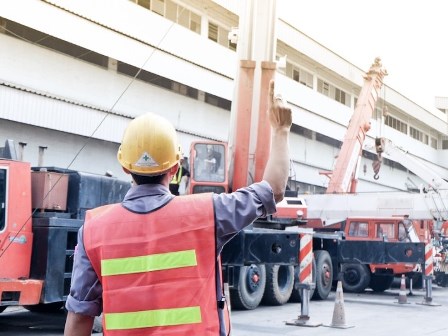
Mobile Crane Hand Signals
All mobile crane operators must have experience and education on all aspects of material handling and mobile crane procedures, including all common manual signals for mobile crane operators.
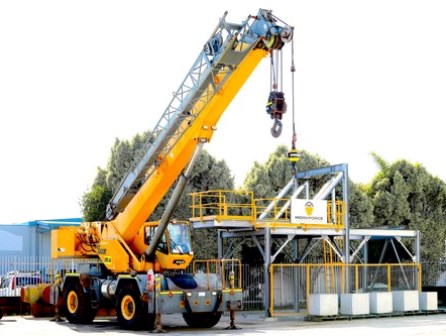
Slewing Mobile Crane
Slewing mobile cranes incorporate a boom or jib that can be rotated. It excludes front-end loader, back-hoe, excavator or other earth moving equipment when configured for crane operation.
